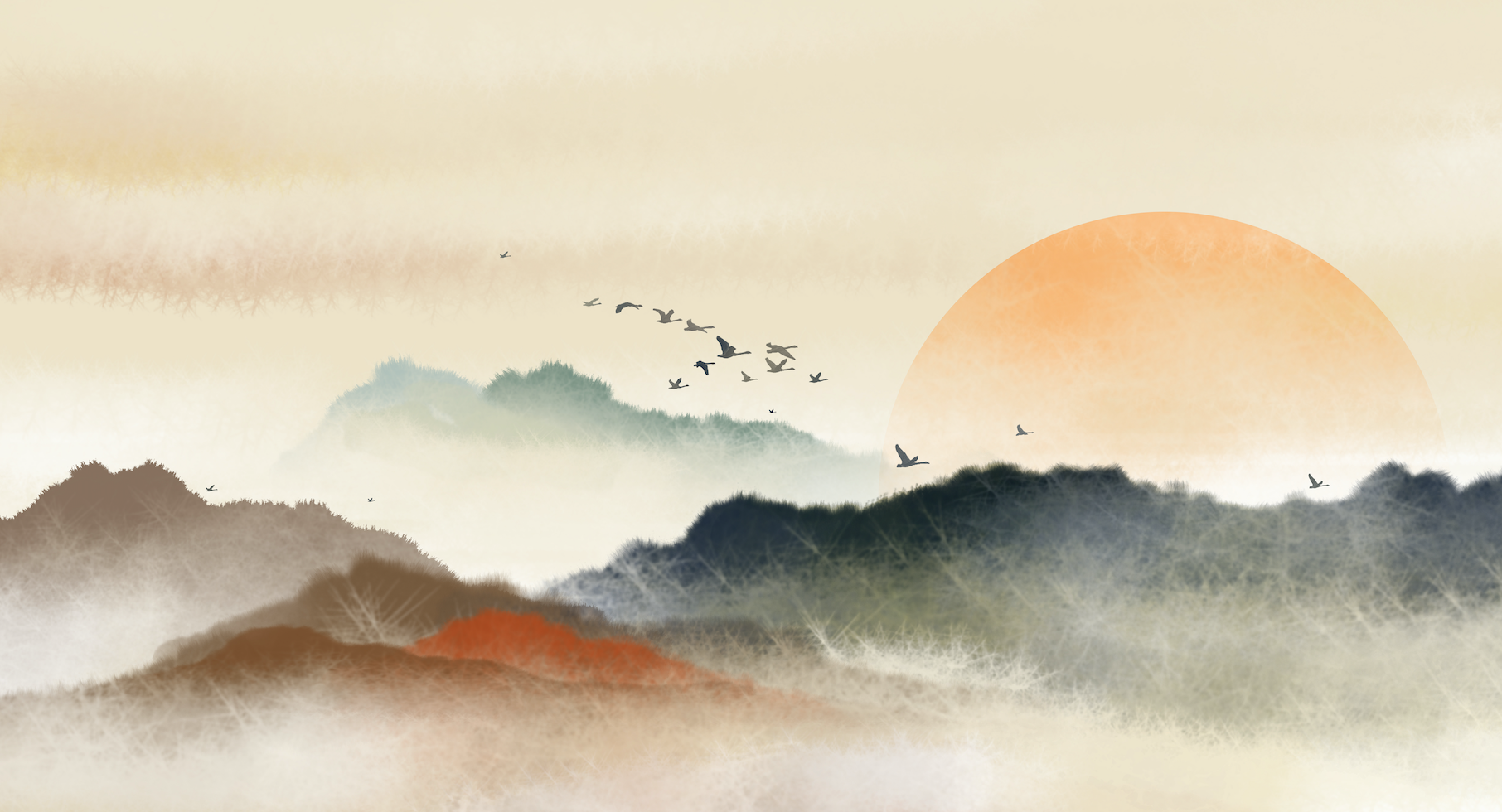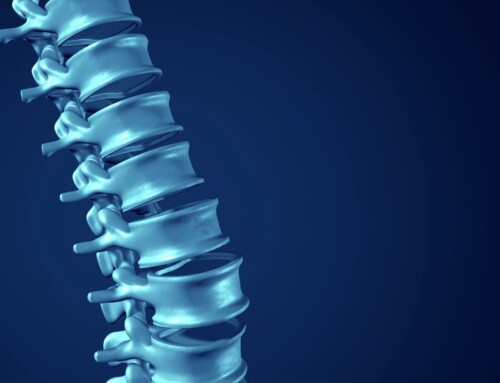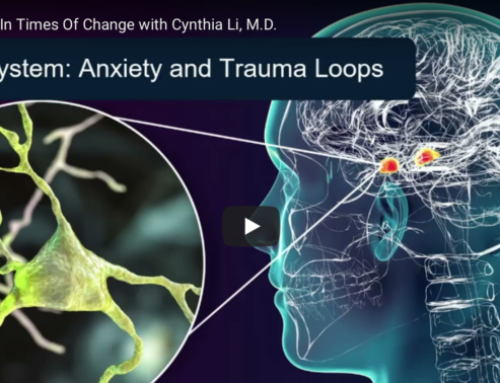I was half-asleep. It was a few minutes past 5:00 a.m. and the mornings larks were half-asleep, too. The sky was deep indigo. My house was rarely so quiet and still. I’d just rolled out of bed, tiptoed to my study for privacy, and turned on my laptop. Teacher Wei Qifeng was on the screen, projecting from over 6,000 miles away in Dali, China, where it was 8:00 p.m. Sporting a shaved head and a perfect set of teeth behind his ear-to-ear smile, he started his session on the mind-body practice of qigong with a soft, yet commanding voice, “Relax your intention.” Relax my intention? I’d always heard the opposite: “Strengthen your intention!” “Manifest your intention!” “Harness the power of your intention!” Besides, it seemed to me that my intention was noble, always focused on the healing of myself, others, and the natural world. Surely, I’d misheard him.
Where Qi Goes, Life Flows.
I was a doctor of internal medicine. After enduring a decade of debilitating, complex, mysterious illnesses that neither medical experts nor I knew how to treat, I tried various integrative modalities which were useful but incredibly labor-intensive. So alongside my dietary changes, vitamins and herbs, and cleanses, I studied and practiced Zhineng (Wisdom Healing) Qigong for several years, crediting a large part of my radical healing to this mind-body practice that originated in ancient China. I also knew the clinical evidence of the benefits of qigong and regularly prescribed it to my patients, many of whose lives were similarly enhanced. But Teacher Wei rephrased his original statement, making what I’d heard unmistakable: “Don’t die to your intentions.” Then, a double dose of surprise: “And don’t die to qi.”
Qi is the Chinese word for the ubiquitous, subtle, and life-giving energy that’s beyond what modern science and technology can measure — it’s thought to comprise over 95% of the universe, knowable only by indirect measurement and inference. Qi is what, through daily practice, I’d learned to incrementally open my body to; with more qi flowing through my cells and tissues, my energy increased and my other symptoms improved exponentially.
While I couldn’t feel any qi when I started, I began by visualizing “qi balls” or miniature suns in my head, chest, and abdomen. By now, I could feel qi inside of me as well as around me, even when I wasn’t practicing qigong. It enlivened me, sustained my health, and sharpened my intuition. Don’t die to my intentions? Don’t die to qi? As if he could hear my inner resistance, Teacher Wei asserted, “If your intentions, even the good ones, are too strong, or if your attachments to the feeling of qi are too strong, they can become obstructions, block your state of flow, and limit your true self.”
Several years of deep study and practice came unraveled for me. Sort of.
The Missing Piece
It wasn’t that I’d been doing everything wrong. It was that I was missing the foundational piece of Zhineng Qigong practice: the state of my consciousness. And it wasn’t just about learning to clarify and stabilize my individual consciousness, but allowing my consciousness to merge with the collective field of other practitioners.
Scientific studies from the HeartMath Institute have demonstrated the power of this collective field. When we feel anxious, scared, or frustrated, our heart rhythms become jagged and irregular. Conversely, when we are in a state of calm, gratitude, and compassion, our heart rhythms become regular and smooth — a state called “coherence,” distinct from simple relaxation. When we are in coherence, our bodies function optimally. What’s more, HeartMath scientists measured the electromagnetic field of the human heart to extend some six to eight feet outward. While in a state of coherence, someone can bring others in his or her field into coherence, thereby amplifying the healing potential. I imagined ten people in coherence in a single space. What if the subtler qi energies worked similarly, which is what qigong practitioners had been experiencing for millennia? A hundred people in coherence across vast distances. A thousand. A million. This wasn’t a private mind-body practice. It was an invisible revolution!
The Observer and “Inner Play”
Recognizing the power of collective coherence when combined with the universal qi field, Teacher Wei created the Mingjue Academy and the World Consciousness Community. Ming means “pure” and jue means “consciousness” or “observation,” so we could say that Mingjue’s nickname is “the observer.” Teacher Wei had learned from Grandmaster Pang Ming, the founder of the lineage of Zhineng Qigong who was himself a Western- and Eastern-trained medical doctor and scientist, that the pure Mingjue state is the greatest foundation of all the movement forms of qigong. Who’s choosing to do the practice? The observer. Who’s initiating all the movements? The observer. Who’s fully inhabiting the body, even as it remains autonomous, like an independent commander inside an avatar? The observer. The consciousness that allows us to be in our bodies and in the world, but also not of them. In other words, the true you, the true I.
Over the following months, I came to recognize the quality of resistance when I was holding onto my intentions too tightly, and to relax them. This shifted my practice from “inner work” to “inner play.” While I still felt qi and, in fact, felt it more strongly, I practiced simply to observe the sensations rather than to cling to them. “Don’t judge any sensations as good or bad,” Teacher Wei added. “That consumes energy. And don’t always look outside of yourself for answers. That also consumes energy. Instead, look inside.” Look inside at what? I wondered. Again, as if hearing my questions, Teacher Wei said, “Always look inside — at your observer, and also look inside from your observer.”
Beyond any sensations, emotions, or thoughts, he was teaching us that Mingjue, the consciousness that could observe our lived experiences without getting entangled with or fixed on them, can also observe itself. Mingjue is a self-aware state. When we arrived at this awareness, we could stretch beyond what limits us, into a new, expanded framework for reality. In this Mingjue state, fear can vanish as if by magic and open us to peace and harmony. In this Mingjue state, I could practice the various movement forms I already knew and potentiate quantum healing.
Full Circle
Ever since I was a young and sensitive child, my singular wish was to reduce suffering in the world. It was the primary reason I felt called into medicine. But there was a constant and gnawing fear underlying this intention, however good the end-effects might be. Now I was learning a new path, guided by the Mingjue state. There was no push energy. No striving or seeking. No competition or achievement. It was an act of the classic wisdom teaching of surrendering, or not doing, or as the great, late Buddhist teacher Thich Nhat Hanh called it, “interbeing.”
I’d come full circle to my intention behind qigong. However, rather than healing happening because my doctor’s mind willed it with great effort and completed a long checklist of to-dos, healing could happen as if an unexpected side-effect of my daily qigong practice.
How?
Because this observer was none other than my true inner healer.
Reflection Questions:
What intention(s) might you lighten?
What practices have helped you to do so?
Additional Resources:
“Qigong Demystified with Dr. Cynthia Li,” a 35-minute conversation
15-minute interview with Teacher Wei
Free online sessions with Teacher Wei
Mingjue Academy One-Year Course
Spring Equinox Awakin Call / Practice with Teacher Wei, March 20, 2022
This is the fourth in a series of articles: Enduring Wisdom in Times of Great Change. In these posts, I’ve shared stories of some of the mentors in my life and what I learned from them.






An excellent teaching for me in this moment. To relax around my devotion to Qigong and healing of self and others. Mister Mingtong himself emphasizes the importance of low stress and relaxation.
Yes… I can hear Master Mingtong saying, “Relaaaaxxxx….”
Thank you for this; your post has come my way in just the right time. I’m just coming out of bed with Covid (yes..) and I feel utterly exhausted, but now I can go back to practice qigong with a relaxed intention… I love playing with the flexible golden ball that never falls and its generous complicity and freedom (it knows it will never fall, even when I get tired of holding it). And I love the connection you made to Thich Nhat Hahn, my beloved teacher .